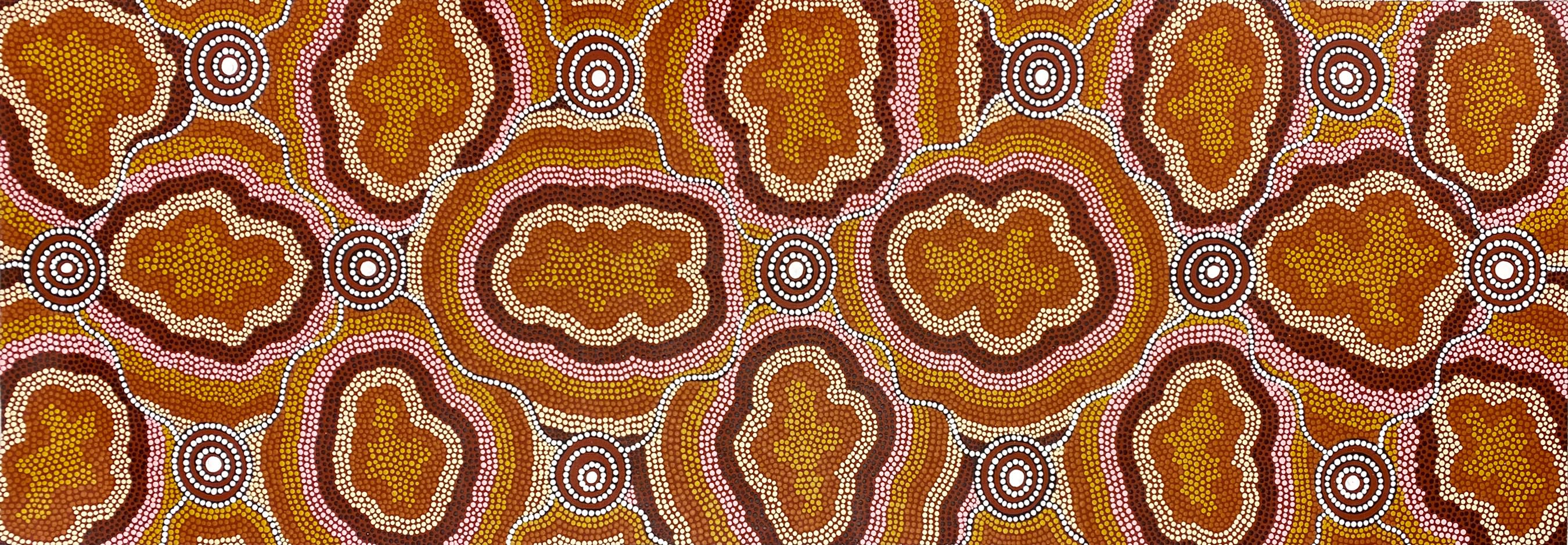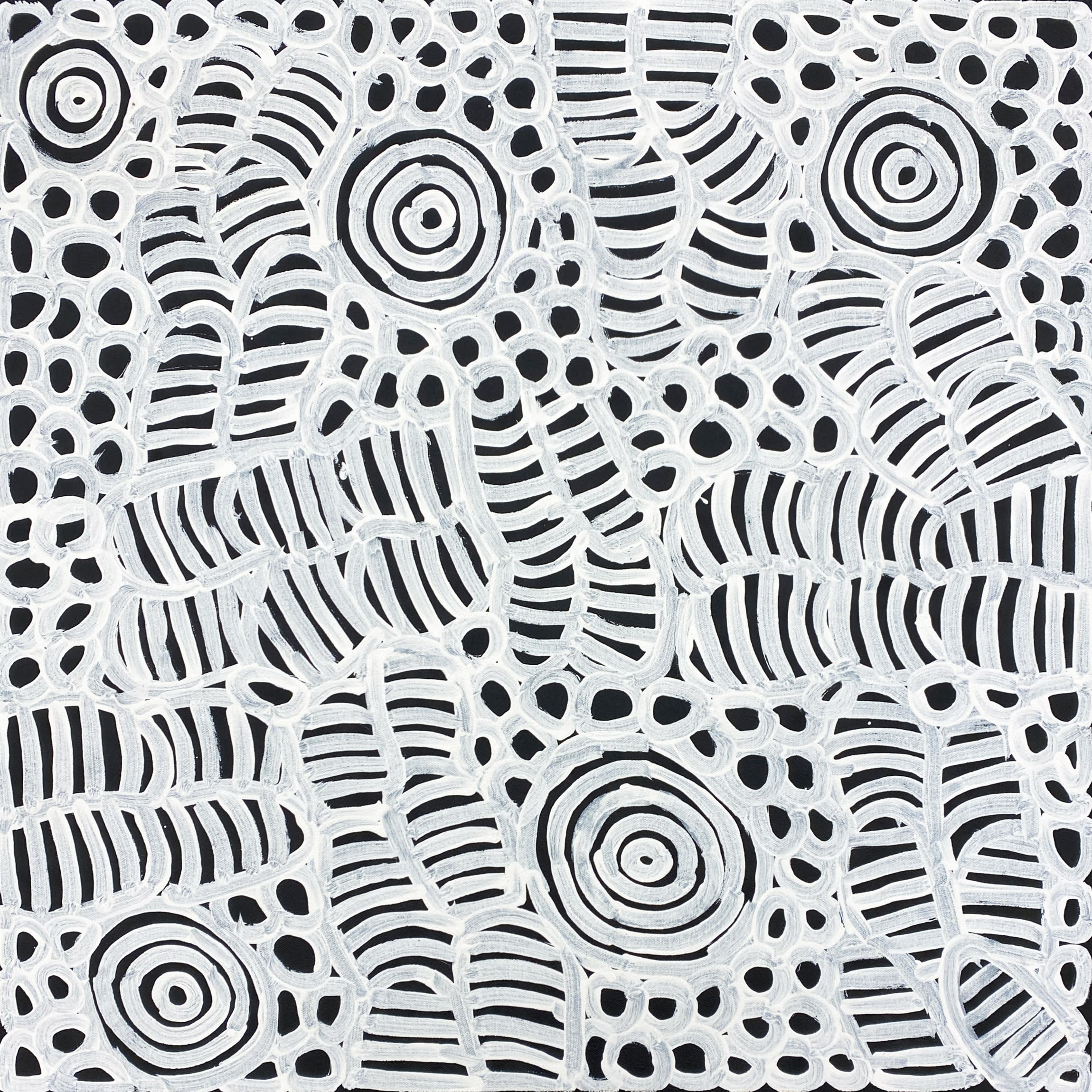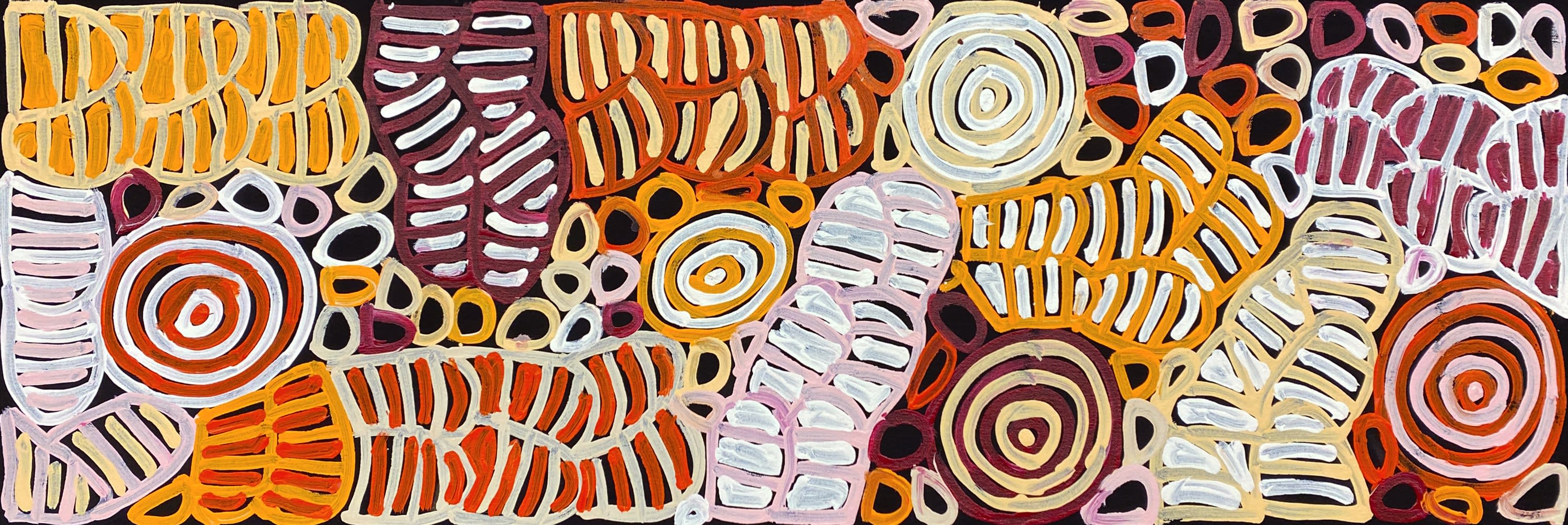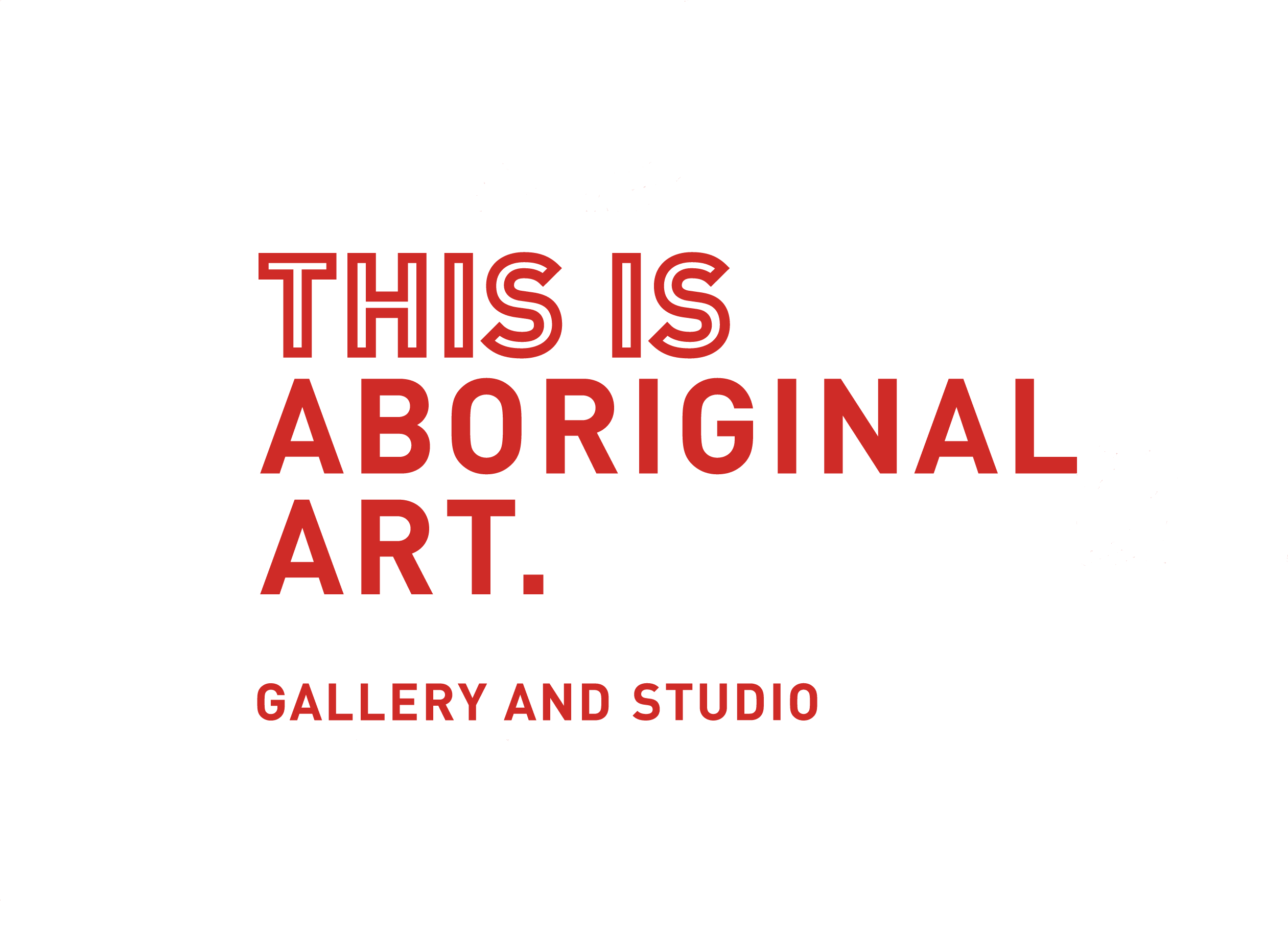
Awelye by Minnie Pwerle, 2004, acrylic on canvas, 179 x 60 cm (contact)
Celebrating an artistic heritage as ancient and enduring as the land itself, Aboriginal people of the Central and Western deserts have nurtured their connection to Country through diverse forms of ritual and artistry for tens of thousands of years. While there is great diversity between Indigenous language groups, it is common practice for traditional and cultural knowledge to be shared and passed down through patrilineal and matrilineal kinship systems. One such form of traditional artistry includes women’s ceremonial body painting - called Yawulyu for people of the Warlpiri and Warumungu language groups, and Awelye for the more eastern Alyawarre and Anmatyerre people of the Utopia region. Yawulyu and Awelye are collective forms of ritual tradition for Aboriginal women, and include other elements and modalities like rhythm, song, and dance - where the painted designs are one intricate piece of a culturally and spiritually complex whole.

Yawulyu (Women's Body Paint) by Patsy Ross, 2023, acrylic on canvas, 50 x 149 cm
All aspects of body paint are steeped in cultural meaning and tradition for Aboriginal women, as a shared expression of collective identity and connection to the land. Pigments of ochre, clay, charcoal, and ash are collected from the earth and mixed with animal fats to create paint-like pastes of various hues. Women traditionally anoint their bodies in oil or animal fat before applying the ochre designs, either with their fingers, or with a flat, padded stick. Applying and receiving body paint are deeply meditative and sensual experiences. Painting the designs can take up to three hours, during which the women chant their Dreaming. Rich reds, whites, oranges, and earthy browns adorn their faces, chests and breasts, creating mosaics of history and identity, each line and curve imbued with meaning from an ancient visual language. Designs are unique between different language groups, reflecting particular Dreaming stories or sacred ancestors, and often incorporating elements of the natural world like celestial bodies, significant sites, and flora and fauna.

Women's Ceremony by June Bird Ngale, 2023, acrylic on canvas, 103 x 108 cm
Reflecting the woman’s traditional role as the nurturer, Awelye and Yawulyu make connections with the fertility of the land, celebrating the nutritious food, water, and healing sources it provides. The ceremony is still practised to signify a young woman’s coming of age. It is women’s business, and is never done in the presence of men. These designs are not mere adornments but bridges to the spirits of their ancestors, and tributes to the land's enduring embrace. As the women gather for Awelye and Yawulyu ceremonies, they become living artworks; vessels of tradition, the carriers of stories.

Yawulyu (Women's Body Paint) by Patsy Ross, 2023, acrylic on canvas, 72 x 43 cm
AWELYE & UTOPIA'S ARTISTIC LEGACY
Some 270km north-east of Mparntwe (Alice Springs), the Utopia region of the Northern Territory encompasses a vast expanse of desert terrain that is the traditional homelands for several Aboriginal language groups, including the Anmatyerre and Alyawarre peoples. Utopia has forged a significant artistic legacy; renowned for its influence of the growing Aboriginal art movement in the late 1970s with the formation of the Women’s Batik Group and the subsequent emergence of some of the most widely recognised Aboriginal artists, such as Emily Kame Kngwarreye, Polly Ngale, Gloria Petyarre and Minnie Pwerle. These artists, particularly Minnie (dec.), were known for depicting Awelye designs on canvas, creating incredible fusions of ancestral wisdom and contemporary vision. Minnie had three daughters; Barbara Weir, Betty Mbitjana and Dora Mbitjana, who have each forged their own acclaimed artistic careers, and who have taken to painting their mother Minnie’s Awelye designs.

Awelye (Women's Body Paint Design) by Dora Mbitjana, 2022, acrylic on canvas, 60 x 60 cm,
While Awelye has been practised for thousands of years as a traditional means of designating custodianship of particular areas among family and kinship groups, it has also found relevance in the post-colonisation battles for the reclamation of Aboriginal land rights. Anmatyerre and Alyawarre people successfully claimed freehold title of the Utopia Pastoral Lease in 1979, following a series of hearings where Utopia women performed various aspects of Awelye as a means to demonstrate their traditional sovereignty of their Country.

Awelye (Women's Body Paint Design) by Dora Mbitjana, 2023, acrylic on canvas, 30.5 x 96 cm
The act of decorating the body in ochre transforms the individual, connecting them to the collective identity of their culture, and to their roles as caretakers of the land and its Dreaming. In the same way many Aboriginal artists create topographic “maps” of the landscape upon their canvases, Awelye and Yawulyu designs often mirror the tracks made in the sand during rituals, the patterns of movement known so well as to create a ceremonial map upon the body. Be it the recurring beats in song, strokes of ochre on skin, or dotting upon canvas, the act of repetition is what separates ritual from the mundane - the cyclical nature of Awelye and Yawulyu ceremonies embody the timelessness of the Dreaming itself. From sand, ochre, and song, to colourful imprints on canvases, Aboriginal artists continue to celebrate their rich cultural heritage, their Dreamings resonating across the contemporary art landscape.





